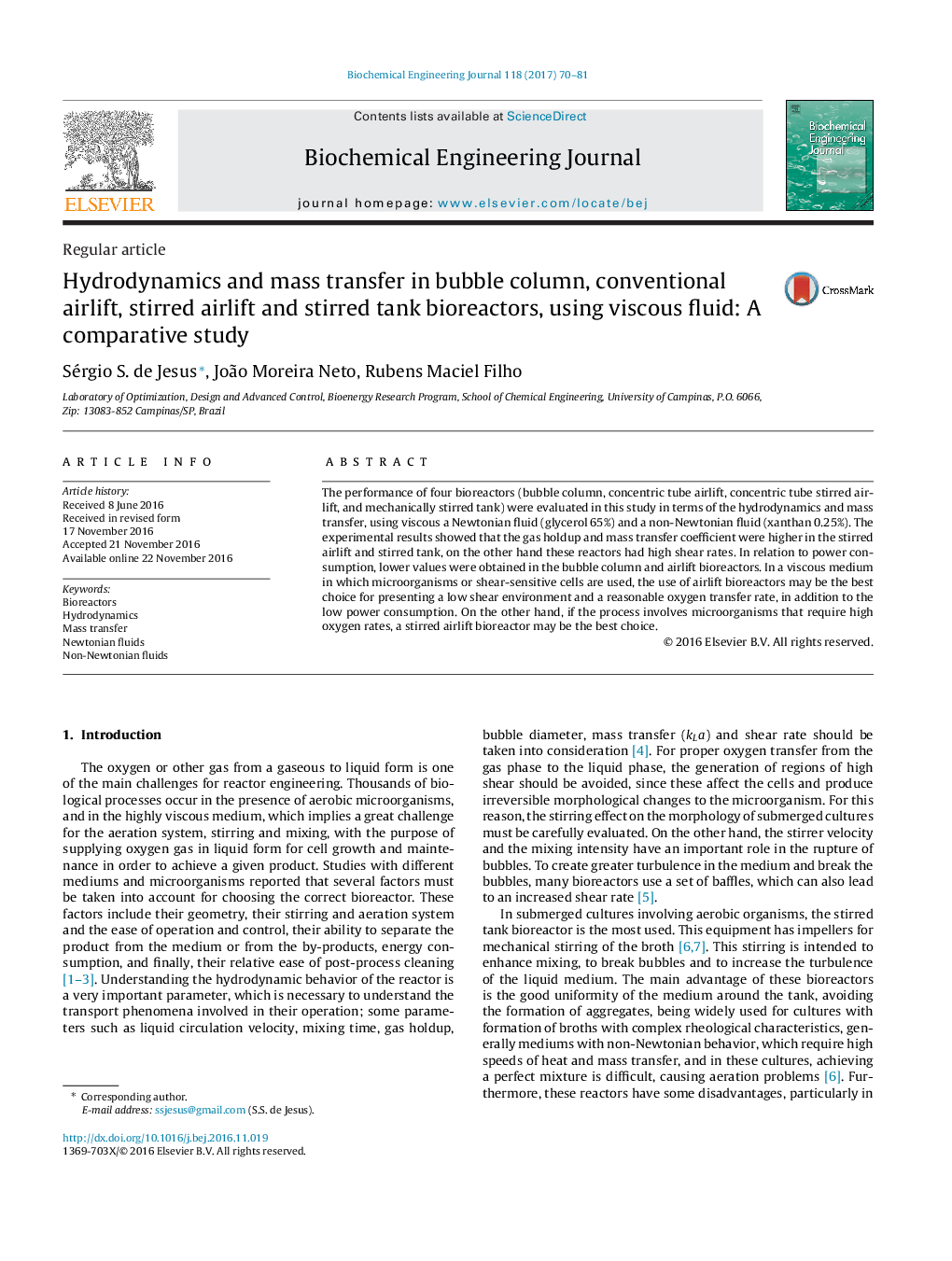| Article ID | Journal | Published Year | Pages | File Type |
|---|---|---|---|---|
| 4752174 | Biochemical Engineering Journal | 2017 | 12 Pages |
â¢High mass transfer was obtained with stirred tank and stirred airlift.â¢Pneumatic bioreactors had lower shear rate and power consumption.â¢Stirred airlift can be a viable alternative to procedures in which high oxygen rates are necessary.â¢For processes with microorganisms sensitive to shear the use of airlift bioreactor is recommended.
The performance of four bioreactors (bubble column, concentric tube airlift, concentric tube stirred airlift, and mechanically stirred tank) were evaluated in this study in terms of the hydrodynamics and mass transfer, using viscous a Newtonian fluid (glycerol 65%) and a non-Newtonian fluid (xanthan 0.25%). The experimental results showed that the gas holdup and mass transfer coefficient were higher in the stirred airlift and stirred tank, on the other hand these reactors had high shear rates. In relation to power consumption, lower values were obtained in the bubble column and airlift bioreactors. In a viscous medium in which microorganisms or shear-sensitive cells are used, the use of airlift bioreactors may be the best choice for presenting a low shear environment and a reasonable oxygen transfer rate, in addition to the low power consumption. On the other hand, if the process involves microorganisms that require high oxygen rates, a stirred airlift bioreactor may be the best choice.
